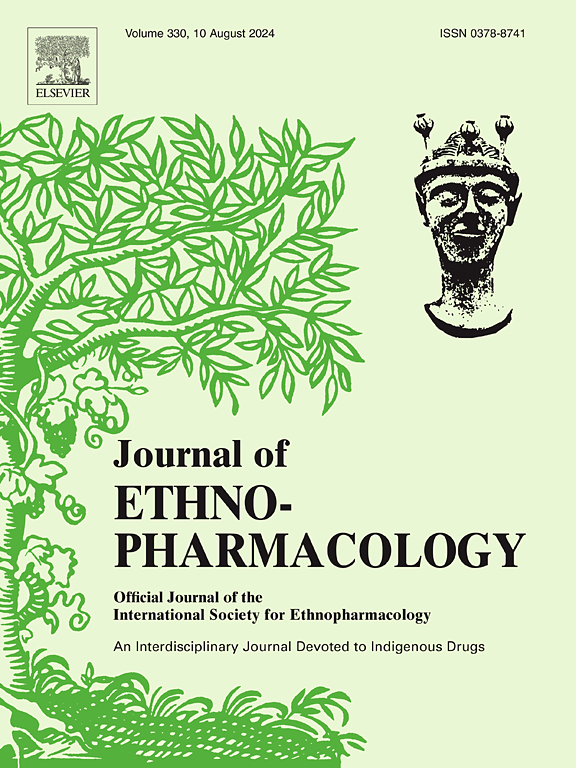Cornua cervi degelatinatum inhibits breast cancer stem-like cell properties and metastasis via miR-148a-3p-mediated TGF-β/Smad2 pathway
IF 4.8
2区 医学
Q1 CHEMISTRY, MEDICINAL
引用次数: 0
Abstract
Ethnopharmacological relevance
Cornua cervi degelatinatum (CCD) is formed by removing the gelatinous substance from deer antlers according to traditional methods. It was first recorded in the Shennong's Classic of Materia Medica and has been included in the Pharmacopoeia of the People's Republic of China. It is commonly used in clinical practice for the treatment of diseases such as cancer and infertility.
Aim of the study
This study aims to investigate the impact of CCD aqueous extract on the proliferation and stemness of breast cancer (BC) cells, with an emphasis on its regulation of miR-148a-3p expression and associated molecular pathways.
Materials and methods
Breast cancer cells were treated with various concentrations of CCD to assess its effects on cancer stem cell (CSC) features, epithelial-mesenchymal transition (EMT) markers, and overall plasticity. The UALCAN platform was utilized to analyze the relationship between miR-148a-3p and Smad2 expression. Functional experiments involving miR-148a-3p overexpression were performed to elucidate CCD's modulatory effects on the TGF-β/Smad2 pathway. Furthermore, molecular docking analysis was conducted to predict the binding affinity of CCD's active components to Smad2.
Results
The CCD aqueous extract significantly reduced BC cell viability in vitro and dose-dependently suppressed the expression of stemness- and EMT-related proteins. Bioinformatics analysis and luciferase reporter assays validated miR-148a-3p as a direct regulator of Smad2, inhibiting the TGF-β/Smad2 signaling pathway. Molecular docking revealed strong binding interactions between CCD's active components and Smad2.
Conclusions
CCD exhibits anti-BC effects by working synergistically with miR-148a-3p to inhibit the TGF-β/Smad2 pathway, thereby reducing BC stemness and EMT progression. These findings provide valuable insights into the molecular mechanisms underlying CCD's therapeutic potential in BC treatment.

求助全文
约1分钟内获得全文
求助全文
来源期刊

Journal of ethnopharmacology
医学-全科医学与补充医学
CiteScore
10.30
自引率
5.60%
发文量
967
审稿时长
77 days
期刊介绍:
The Journal of Ethnopharmacology is dedicated to the exchange of information and understandings about people''s use of plants, fungi, animals, microorganisms and minerals and their biological and pharmacological effects based on the principles established through international conventions. Early people confronted with illness and disease, discovered a wealth of useful therapeutic agents in the plant and animal kingdoms. The empirical knowledge of these medicinal substances and their toxic potential was passed on by oral tradition and sometimes recorded in herbals and other texts on materia medica. Many valuable drugs of today (e.g., atropine, ephedrine, tubocurarine, digoxin, reserpine) came into use through the study of indigenous remedies. Chemists continue to use plant-derived drugs (e.g., morphine, taxol, physostigmine, quinidine, emetine) as prototypes in their attempts to develop more effective and less toxic medicinals.
 求助内容:
求助内容: 应助结果提醒方式:
应助结果提醒方式:


